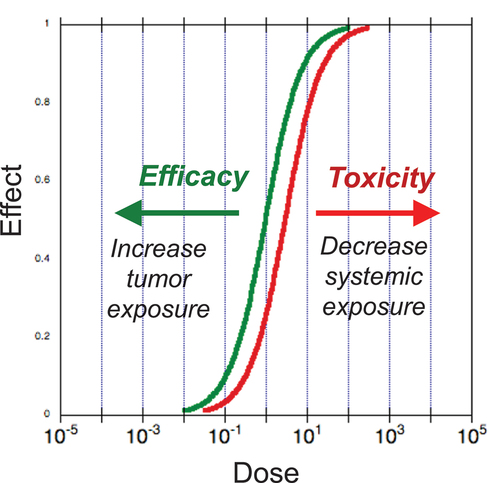Figures & data
Figure 1. Framing the problem: two alternative ways to open the therapeutic window. Potency of cytokines is usually similar within and outside tumor tissue, leading to close tracking of the toxicity and efficacy dose response curves. The hypothetical curves shown here schematically represent this phenomenon. The resulting therapeutic window can then be impractically small – or even nonexistent. Multiple efforts are underway to solve this problem. Anchored cytokine immunotherapy shifts both response curves in favorable directions, greatly expanding the therapeutic window.

Figure 2. Schematic of alternative approaches to directly inject cytokines into tumors. Administration of soluble or depot-contained cytokine produces a kinetic competition between target cell uptake (T cells in this representation), and leakage out of the tumor. Skewing that competition toward intratumoral target-mediated consumption and away from leakage is a moving target, as both the number of target cells and depot release rate may vary patient-to-patient, by tumor microenvironment composition, and over time. Administering cytokine in a sterically accessible but anchored format obviates this issue.

